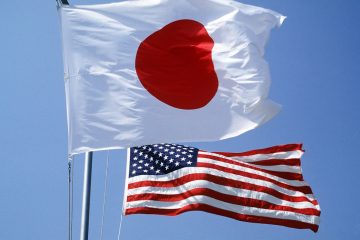| Symbol | Last | Change | % | High | Low |
|---|---|---|---|---|---|
| JPY / INR | 59.331 | +0.087 | +0.15% | 59.470 | 59.116 |
| Open Last Trade : 08:35 | GMT Time : Wed Aug 13 2025 08:35 | ||||
JPY/INR : Intraday Live Chart
JPY/INR : Technical Signal Buy & Sell
| 5 Min Signal | 1 Hour Signal | 1 Day Signal |
|---|---|---|
| Buy | Sell | Buy |
JPY/INR : Moving Averages
| Period | MA 20 | MA 50 | MA 100 |
|---|---|---|---|
| 5 Minutes | 59.39 | 59.30 | 59.25 |
| 1 Hour | 59.17 | 59.20 | 59.21 |
| 1 Day | 59.01 | 58.84 | 57.23 |
| 1 Week | 59.01 | 57.04 | 56.62 |
JPY/INR : Technical Resistance Level
| Resistance 1 - R1 | Resistance 2 - R2 | Resistance 3 - r3 |
|---|---|---|
| 59.262 | 59.261 | 59.279 |
JPY/INR : Technical Support Level
| Support 1 - S1 | Support 2 - S2 | Support 3 - S3 |
|---|---|---|
| 59.244 | 59.227 | 59.227 |
JPY/INR : Periodical High, Low & Average
| Period | High Change from Last | Low Change from Last | Average Change from Last |
|---|---|---|---|
| 1 Week | 59.595 -0.264 | 0.000 +59.331 | 59.305 +0.026 |
| 1 Month | 59.761 -0.430 | 0.000 +59.331 | 58.722 +0.609 |
| 3 Month | 60.227 -0.895 | 0.000 +59.331 | 57.109 +2.222 |
| 6 Month | 60.528 -1.196 | 0.000 +59.331 | 57.752 +1.579 |
| 1 Year | 60.528 -1.196 | 0.000 +59.331 | 57.039 +2.292 |
JPY/INR : Historical Chart
JPY to INR Exchange Rate History: From Trade Companionship to Diverging Paths
The JPY to INR exchange rate offers an intriguing lens into the relationship between two Asian economies—Japan, a manufacturing and technology giant with deflationary tendencies, and India, a rising services and consumption-based economy marked by high growth and inflation. This pair has shown a long-term weakening of the yen versus the Indian rupee, primarily due to divergent monetary policies, interest rate differentials, and currency inflation profiles.
1990s: Yen Dominance Amid India’s Liberalization
Following India’s 1991 economic liberalization, the rupee began a managed float, and its depreciation against most majors, including the yen, was notable.
JPY/INR hovered around 0.40–0.45 in the early 1990s.
Japan was still in its post-bubble strength phase, and India had just started stabilizing.
By the late 1990s, the yen was one of the strongest currencies in the world, while the rupee was grappling with double-digit inflation and fiscal deficits.
2000–2008: Rupee Recovery vs. Yen Stagnation
During the 2000s:
JPY/INR remained volatile, fluctuating between 0.35 to 0.45, but the rupee started gaining ground.
India saw strong GDP growth and foreign inflows, while Japan remained stuck in zero interest rate territory.
The interest rate differential favored the rupee.
By 2008, just before the global crisis, JPY/INR had fallen to 0.36, marking a shift toward INR strength.
2008–2013: Crisis Volatility and JPY Spike
The global financial crisis in 2008 briefly lifted the yen due to its safe haven status:
JPY/INR spiked to 0.58 in late 2008 as investors fled to the yen.
But this was short-lived. As stimulus efforts resumed globally, the pair reverted back below 0.50.
India’s inflation remained high, and current account pressures re-emerged, but Japan’s aggressive easing limited the yen’s long-term gains.
2013–2019: Abenomics and the Decline of the Yen
As Abenomics unfolded:
Japan introduced quantitative easing and yield curve control.
JPY/INR fell sharply from 0.55 in 2013 to nearly 0.60 in 2015, but then declined below 0.60 as India strengthened monetary policy under the RBI’s inflation targeting regime.
INR became more stable, while JPY weakened globally.
By 2019, the pair dropped to 0.62, a strong relative position for the rupee.
2020–2024: Pandemic, BOJ Easing, and INR Resilience
COVID-19 disrupted global currencies, but the JPY/INR pair followed the broader theme:
Yen rose initially in 2020 to 0.72, but then steadily declined.
Japan maintained ultra-loose policy, while India raised rates post-pandemic to combat inflation.
By 2024, JPY/INR had slid to 0.55, and the long-term downward trend in the pair resumed, supported by monetary divergence and higher Indian yields.
As of April 2025, JPY to INR trades near 0.54, showing a continued weakness in the yen amid persistent zero-rate policy, while India benefits from growth momentum and capital inflows.
✅ Key
🟢 = JPY appreciated vs INR
❌ = JPY depreciated vs INR
⚠️ = Mixed or volatile phase
📊 JPY to INR Exchange Rate by Decade
| Decade | Avg. JPY/INR Rate (Approx) | Change vs. Previous Decade | Key Events |
|---|---|---|---|
| 1990s | 0.42 | 🟢 Yen strong | Japan’s trade dominance, India’s early liberalization |
| 2000s | 0.38 | ❌ INR gained | India’s growth and FDI inflows |
| 2010s | 0.50 | ⚠️ Volatile | Abenomics, rupee stability |
| 2020s (till 2025) | 0.56 | ❌ Yen weakening | BOJ easing, India rate hikes |
While the JPY to INR trend historically favors INR strength, future performance will hinge on Japan’s exit (or persistence) from ultra-loose policy and India’s inflation management.
JPY/INR - Japanese Yen / Indian Rupee Currency Rate
Live Price of JPY/INR. JPY/INR Live Chart, Intraday & Historical Live Chart, Buy Sell Signal, JPY/INR News, JPY/INR Averages, Returns & Historical Data
» JPY/INR
» JPY/INR Real Time Quotes
» JPY/INR Live Chart
» JPY/INR Intraday Chart
» JPY/INR Historical Chart
» JPY/INR Buy Sell Signal
» JPY/INR News
» JPY/INR Videos
» JPY/INR Averages
» JPY/INR Currency Pair
» JPY/INR Historical Data









